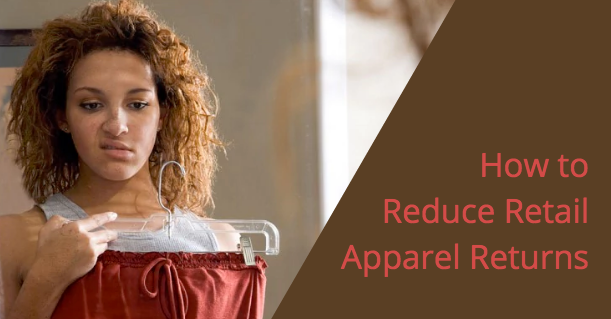Each year, The Retail Equation releases a survey covering “Consumer Returns in the Retail Industry.” In 2015, perhaps the most notable stat was “Returns as percentage of total sales,” which came in at 8% according to the National Retail Federation (NRF).
That is of particular significance when you consider this: the total industry sales as tracked by NRF equated to $3.256 trillion. Which means that 8% of that sizable figure is $260.5 billion. Now, imagine if the industry could get even just some of that money back.
That’s an industry average; what are your annual sales figures and revenues? Are you hitting your targets and goals for growth and earnings? What would it do for your company if you were to add back even half of that 8%?
Returns: A Fact of Retail Life or a Preventable Occurrence?
Returns are often seen as an accepted truth of the industry. Despite your best efforts and the highest levels of quality control, some customers will return purchases.
The far biggest reason for returns of online orders is that the customer ordered an incorrect product or size. Items are also often returned when the product doesn’t match the description, or the customer’s expectations.
When it comes to your brick and mortar stores, you probably deal with fewer of these types of returns and exchanges, but there are still numerous other reasons items are returned: customers change their mind, gift recipients receive something they don’t like, etc.
While returns might not be entirely preventable, they can be minimized.
[Tweet “You can use your fitting rooms to reduce return rates – here’s how”]
Minimizing Returns
Brick and mortar stores have a big leg up on eCommerce. The ability to touch, feel, and try on before buying greatly reduces returns due to:
- incorrect size
- poor fit
- misleading images and description
- item not as expected
To illustrate just how much of an impact it can have when a customer can touch and feel a product before purchase, take a look at a study published by Shorr Packaging during the 2015 holiday season. Shorr predicted that return rates for eCommerce businesses would exceed 30%. This was not specific to the apparel industry, which would be expected to have even higher return rates.
In comparison, the report noted that in 2014, brick and mortar stores saw a return rate of just 8.89% during the 2014 holiday season. Brick and mortar apparel stores were above that average, with a return rate of roughly 10%.
The Importance of Fit
 When it comes to apparel, fit is a big reason for these stark differences in return rates. The Shorr Packaging study included a stat from ASOS.com, a British fashion store that cut their return rates in half by implementing a new sizing app on their website.
When it comes to apparel, fit is a big reason for these stark differences in return rates. The Shorr Packaging study included a stat from ASOS.com, a British fashion store that cut their return rates in half by implementing a new sizing app on their website.
Returns due to fit are sizable, with Digiday citing 17% of eCommerce returns due to issues with fit, and Drapers Etail Report of 2012 reporting that number at 70%. Those numbers range widely, but no matter the actual number, it’s obvious that this is a problem online retailers need to manage.
Brick and mortar stores have an advantage in this department because they don’t have to worry about sizing apps or think of other clever ways for customers to “virtually” try on their outfits.
The opportunity to touch, feel, see, and try on clothing items is vital to ensuring that customers buy exactly what they want and need. When shoppers can try on clothing items before they buy, the odds of returns dip notably. Unless a shopper is buying clothing as a gift, the try-on eliminates nearly all concerns about sizing and fit, and provides the customer a sense of how they look in a particular garment.
Having said that, most brick and mortar stores could take even more opportunity of this advantage.
[xyz-ihs snippet=”Fit-Happens-CTA”]
The Importance of the Fitting Room
Of course, just having fitting rooms isn’t enough to cut your fit-related return rates. You need to encourage shoppers to use those fitting rooms.
Most brands train their associates to actively promote trying on their selected clothing. But you also need to be sure that your fitting rooms are a positive environment. Proper lighting and quality mirrors are essential, so that shoppers can get a realistic perception of how they look in certain items.
Customers must also feel that their privacy is respected, but that it is also easy for them to reach out ask for help from an associate if necessary. A fitting room process is essential.
Summary
The retail industry leaves $260.5 billion on the table each year as a result of returns. There will never come a day where that number falls to zero. However, by offering a better fitting room experience and encouraging the customer try-on, your business can get its piece of that $260.5 billion back.
If you liked this post, you may also enjoy:
The Power of the Customer’s Journey (& How You Can Use it to Fix Your Fitting Room)
[xyz-ihs snippet=”Fit-Happens-CTA”]
Sources:
https://nrf.com/sites/default/files/Images/Media%20Center/NRF%20Retail%20Return%20Fraud%20Final_0.pdf
https://chargeback.com/top-10-reasons-for-a-product-return/
http://www.imamerchants.org/2010/01/top-6-reasons-for-e-commerce-merchandise-returns/
http://www.shorr.com/packaging-news/2015-10/e-commerce-returns-best-practices
http://k3retail.com/assets/resources/Drapers_Etail_Report_2012.pdf
